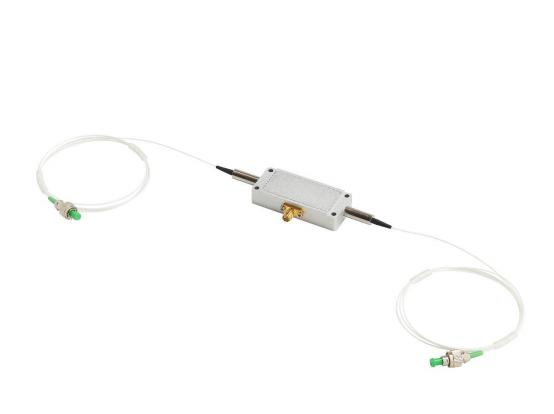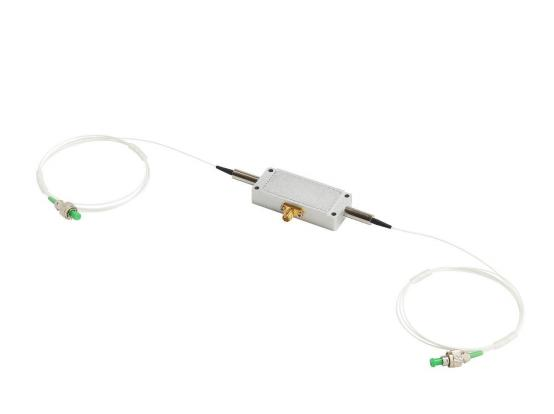What kind of AOM should be used for DAS systems?
The role of AOM in a DAS system is to modulate the continuous light output from the laser into pulsed light, whereas in a DAS system, the pulse width of the pulsed light determines the spatial resolution of the DAS system.
The higher the spatial resolution, the narrower the pulse width required. For example, a pulse width of 100ns corresponds to a spatial resolution of 10 meters, while a pulse width of 10ns corresponds to a spatial resolution of 1 meter.
One important parameter of AOM is the rise time. The rise time of 80M AOM seen in the market is usually 30ns, while the rise time of 200M AOM is 10ns.
So if you want to modulate a narrower pulse width, the rise time of your AOM must be matched. Otherwise it is theoretically impossible to modulate a narrower pulse width due to the AOM's rise time.
For example, if you need a pulse width of 30ns, then the rise time of your AOM should be less than 30/2=15ns to work. The rise time of an 80M AOM is already 30ns, so you can't modulate a 30ns pulse width laser with an 80M AOM.
So if a 200M AOM can modulate a narrower pulse width, then should we just go with a 200M AOM for our system? If we use 200M AOM, then it means that our DAQ board needs 1G sampling rate, which will increase the cost of the system, and at the same time the amount of data to be processed will be larger and the system will be more responsible. Is there a technical solution where the frequency is 80M, but also modulates a narrow pulse width? If there is, then the DAQ card can still be selected for 250M instead of using a 1G data acquisition card, which makes the system data
- What are the applications of distributed acoustic sensing?
- What kind of AOM should be used for DAS systems?
- What is the vibration response frequency of DAS?
- Spatial Resolution Of Distributed Acoustic Sensing
- What data acquisition card is needed for distributed acoustic sensing?
- EDFA for distributed acoustic sensing
- Balanced photodetectors for distributed acoustic sensing

